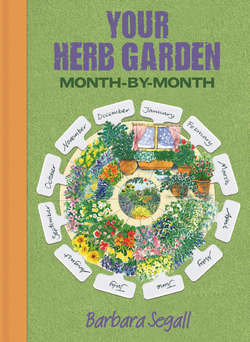Читать книгу Your Herb Garden - Barbara Segall - Страница 29
На сайте Литреса книга снята с продажи.
FRENCH TARRAGON
Оглавление(Artemisia dracunculus – Compositae)
French tarragon’s narrow leaves hold its delicately bittersweet, aniseed flavour, prized in cooking. In the garden it makes a shapely block of feathery foliage.
| type | Herbaceous perennial, tender in cold areas |
| flowers | Insignificant, and do not set seed. Best to encourage leaf production by clipping back flowering shoots |
| leaves | Long and strappy, pale green |
| height | 60cm (24in) |
| spread | 30cm (12in) |
| planting | Plant in spring and autumn to grow outdoors. To grow indoors in winter, pot up roots in autumn, expose plants to cool conditions (below 4°C/40°F) for three weeks, then grow on a sunny windowsill or in the greenhouse |
| position | Full sun |
| soil | Well-drained, light |
| care | Make sure roots are not waterlogged at any stage, and in winter protect with a straw mulch. Divide plants every three years to retain leaf flavour |
| propagation | Take soft stem cuttings in summer and feed cuttings through the growing season with a liquid fertiliser. Divide clumps in autumn or spring |
| species and varieties | French tarragon has the best flavour. Russian tarragon (Artemisia dracunculoides) is a strong-growing, large plant but is less distinctively flavoured |
| harvest | Pick leaves to use fresh as you need them, but best flavour in summer. Freeze in water in ice-cube trays, bag up and keep in the freezer until required. Can be air dried, but lose flavour if dried too quickly at high temperatures |
| herbal value | Use in fines herbes, in salads, dressings, herb butters, to flavourvinegar, classic sauces and fish and poultry dishes |
